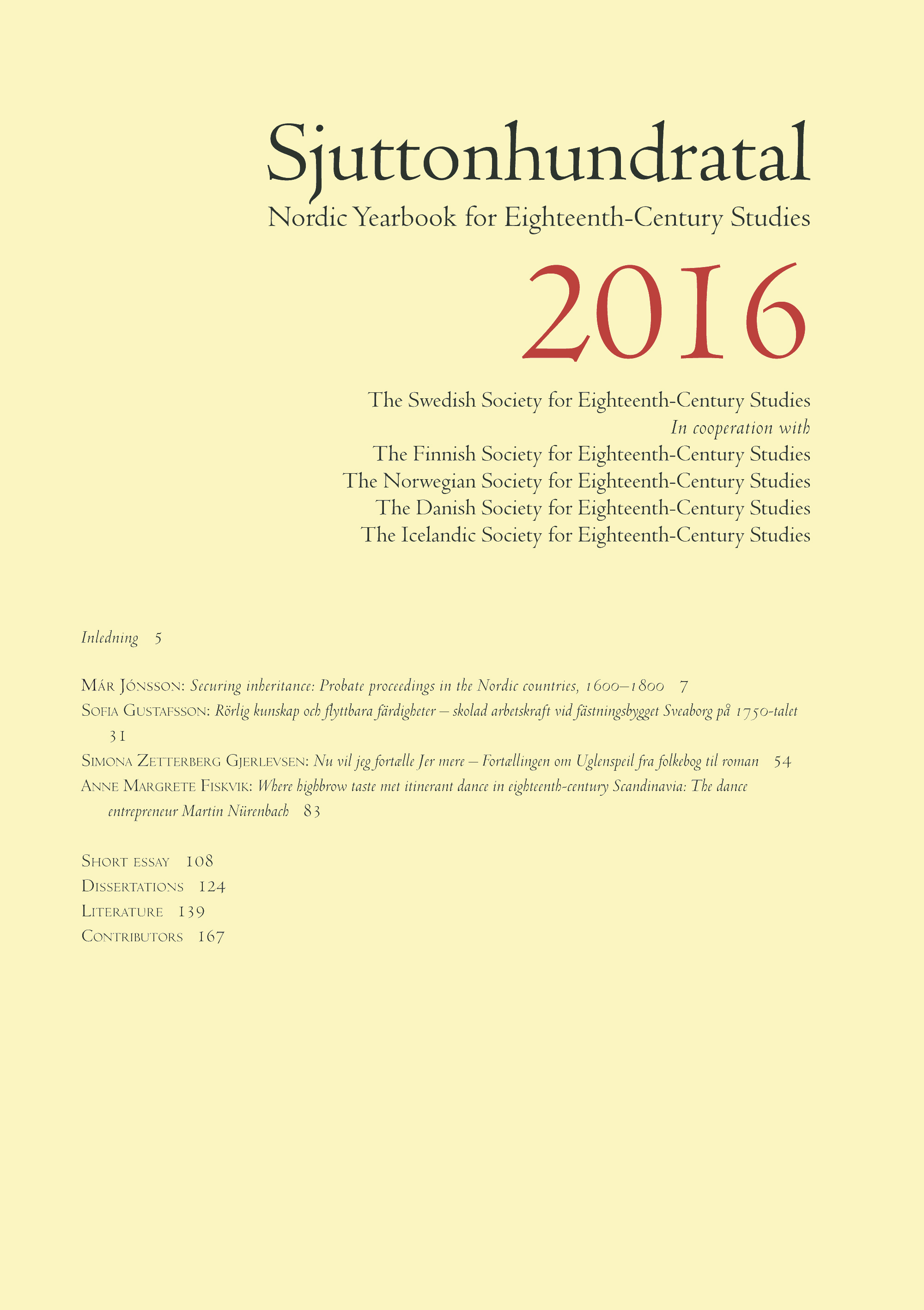Where highbrow taste met itinerant dance in eighteenth-century Scandinavia: The dance entrepreneur Martin Nürenbach
DOI:
https://doi.org/10.7557/4.3874Keywords:
dance, Christiania, 1770s, itinerant performance practice, highbrow theatre, popular culture, equilibrist, theatrical ensemble, comic and grotesque dance stylesAbstract
In 1770, the German-Swedish dancer and acrobat Martin Nürenbach (d.1780) arrived in Christiania (Oslo), Norway, where he successfully applied for a royal privilege to perform Danish comedies. Nürenbach had previously been part of an itinerant ensemble operating in Sweden, led by Carl Gottfried Seuerling. Nürenbach quit Norway in 1772 and returned to Sweden, where he resumed his former career as an itinerant artist until he died in Finnish Tavastland (Tavastia), in 1780. In the field of Nordic dance Nürenbach’s efforts have generally been belittled or else ignored. Although credited for his attempt to establish a more stable theatrical culture in Christiania, he has also been dismissed for lacking skill as an actor and a theatre director. However, the repertoire in which he excelled was not the highbrow theatre of the era. This article emphasises the need to investigate Nürenbach and his like in the light of itinerant performance traditions. In doing so, it recasts his achievements as a dancer and acrobat. As part of this reassessment, the article revisits a notorious ‘anti-recommendation’ that followed Nürenbach’s application for royal performance privileges in 1771. The anonymous memorandum in question has repeatedly been cited as proof of the alleged inferiority of Nürenbach and his ensemble.









